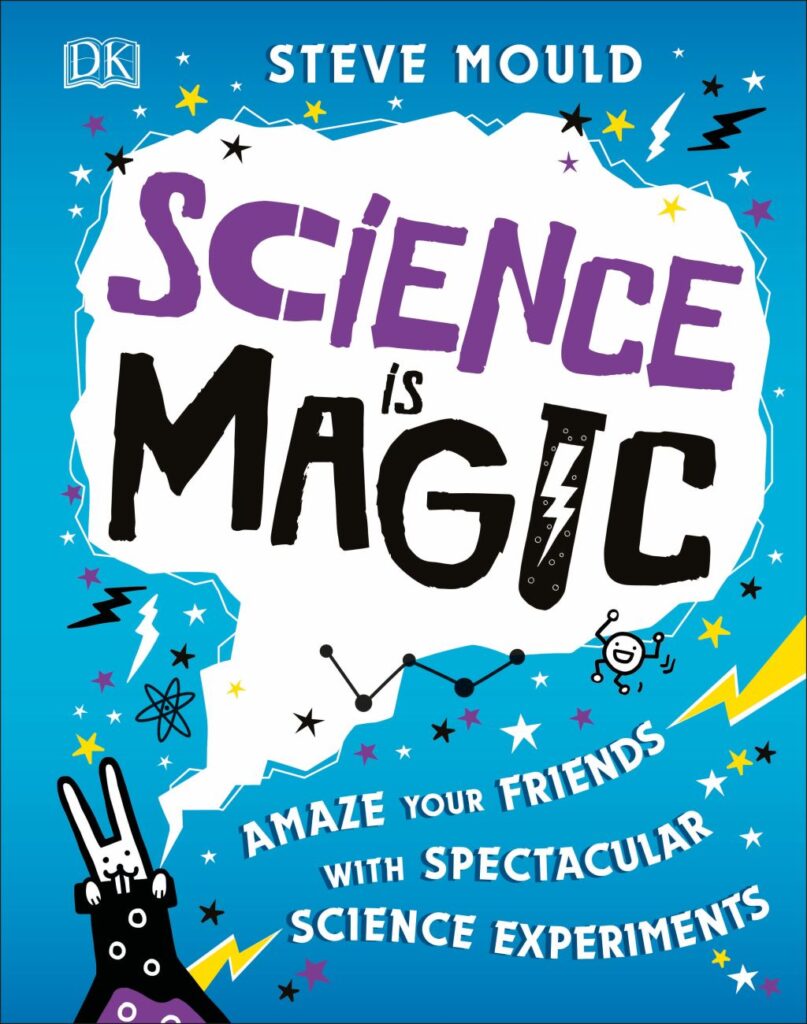March 23, 2020
Explore the Science Behind Magic in DK Canada: Science is Magic

Discover the astounding science behind illusions and magic tricks.

About Science is Magic
Join comedian and author Steve Mould to find out the scientific secrets behind amazing magic tricks. Learn how to bend water with a balloon, how to create ghosts with mirrors, and how to turn water into juice. Packed with optical illusions, pranks, and fun facts, this book is a must-have for any aspiring scientist or magician.
Kids will love impressing their friends and families with simple magic tricks that teach them valuable science lessons at the same time. Each trick is explained using step-by-step photography, and the science behind each magic trick is explained clearly and simply. Interspersed throughout the book are profiles of famous magicians and illusionists, such as Harry Houdini and David Blaine, and stories of how they used science when performing their most famous tricks.
Our Thoughts
I think it is safe to say that the world that our kids knew only two weeks ago has been completely shaken. I know for myself that so many times in the last week, I have woken up thinking this must be a really bad nightmare and when will this end. I can’t even begin to imagine how this appears to our children, as they may be trying to understand the information and struggle with telling us how they feel.
I know that I have seen plenty of homeschool schedules circulating, learning plans and advice. In our home, we have decided not to do this with our youngest. We want to add some stability but we also appreciate that he is scared and missing his friends, family and soccer. We created a schedule with him that does include working through a math workbook, reading, soccer work outs and most importantly time to Facetime his family (I cannot wait for this all to end to give my parents and siblings a hug!).
For reading and science, we are looking for fun. I don’t want this to be feel like a chore for him and to be honest, one week into social distancing and ensuring we are staying at home, we are all cranky so adding more stress in to this mix will not be a good idea.
Science is Magic is the perfect resource for young children. It is full of facts, activities and real life examples. The book has special pages dedicated to science tricks, science wonders and pages called How Do They Do It? I was a bit nervous about the activities and what I would have to have on hand at home, but they were all items that you would have and wouldn’t mind sacrificing up in the name of science (except maybe the oil one!). Many needed paper, water, paper plates, cup, paper clips, etc.. Your child may need some help with them depending on their age but they were not difficult to complete, and to be honest it was a great break for us parents too (I think we all need a good daily laugh especially right now). I even enjoyed learning the science behind the tricks. Our personal favourite is magnetic fingers, we are still trying to prove it wrong! Not only does the book contain great activities but they can also read through it like a regular book and learn about things like Houdini, reading minds, cosmic auroras and rocky mysteries.
Science is Magic will be a great resource for parents as we navigate these difficult times. It is full of exciting science topics that will engage your child and keep learning fun, especially during a time when everything feels overwhelming. You don’t need to buy extra supplies or waste food supplies to complete the experiments (a huge bonus right now as we try to conserve as much as possible). And most importantly, it gives parents and their kids a great break from their new daily routine to just have fun.
You can purchase a copy of this book on Amazon and Indigo.
About the Author
Steve Mould is a science expert and comedian with a physics degree from the University of Oxford. He has a YouTube channel with over 200,000 subscribers, and his videos regularly achieve hits in the hundreds of thousands. One of these videos (about “self-siphoning beads”) went viral worldwide, gaining nearly 2 million hits and being mentioned in The New York Times and on the BBC. Scientists later discovered why the beads performed in the mysterious way they did and dubbed it “The Mould Effect.” Steve also hosts a radio show on BBC Radio 4 and is part of the live comedy/science trio Festival of the Spoken Nerd.
Disclosure: I received a copy of this book in order to facilitate this review. All opinions expressed are my own.